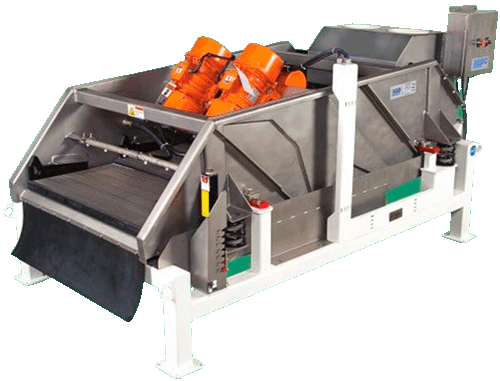Circular Vs. Rectangular Vibratory Screeners
For most food and pharma applications, circular vibratory screeners are generally preferable to rectangular. They’re gentler, more efficient, continuous, and able to be hygienic. The only times rectangular vibratory screener are used are when equipment layout or product shape requires a rectangular piece of equipment.
When to use rectangular vibratory screeners:
Again, circular beds are almost always superior. The reasons you may want to use a rectangular bed are the following:
Large throughput is needed and hygeinic design is not.
Rectangular vibratory beds are popular in aggregates and sand because huge throughputs are needed. Were you to use a circular bed, the equipment would become much wider than practical by the time the desired throughput was required. They would also become prohibitively expensive to manufacture.
Incoming product is in rectangular sheets.
If the material being screened has a rectangular or square shape, such as certain types of pellets or flakes, clearly a rectangular screener would be more efficient.
Downstream equipment infeeds prefer it.
Rectangular screeners typically have a straight-line discharge path, allowing for easier and more controlled material discharge compared to circular screeners. This feature can be beneficial when handling materials that are prone to sticking or require precise discharge onto downstream equipment.
You are scalping or dedusting.
Rectangular screeners are commonly used for scalping or dedusting applications where oversized particles or contaminants need to be removed from the material stream. The rectangular design provides effective screening of the entire width of the machine, ensuring efficient removal of unwanted particles.
A circular piece of equipment won’t fit in the process.
Rectangular screeners can be easier to install in certain production layouts or tight spaces due to their shape. They can be positioned against walls or integrated into existing processing lines more conveniently than circular screeners, which require additional clearance for their circular motion.
Not sure what is best for your process? Simply give us a call or fill out the form to have an expert get in touch with you.

